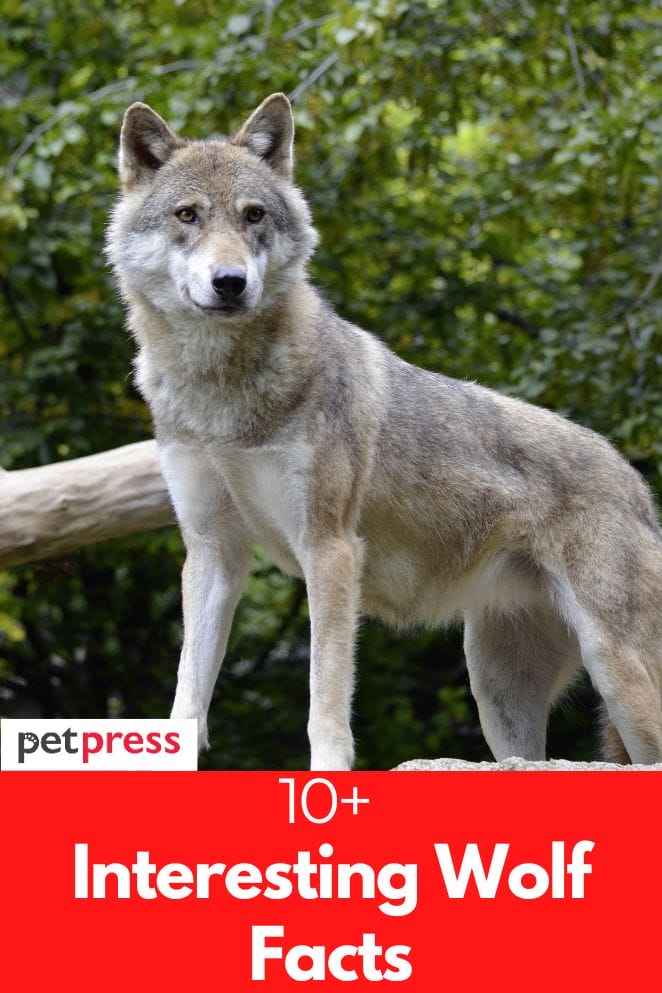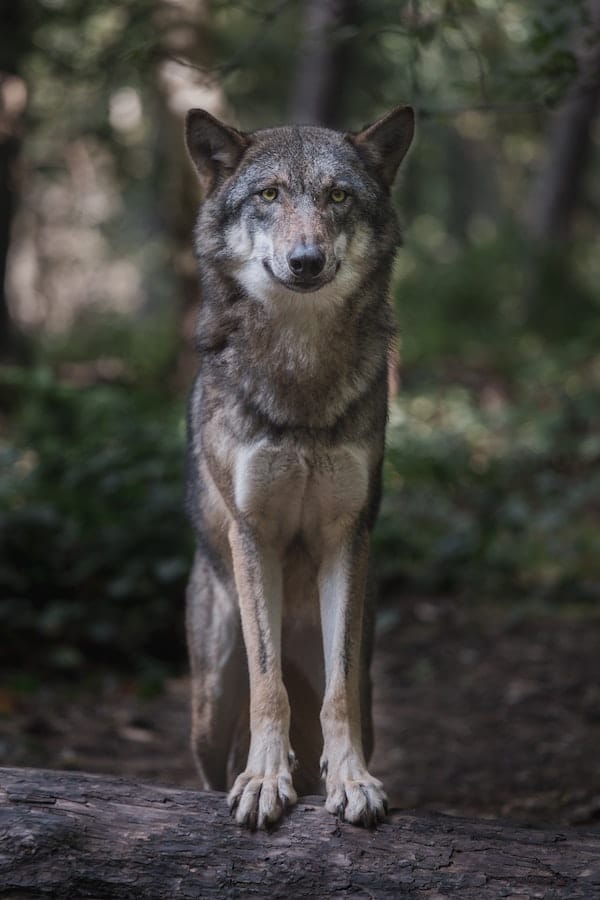
Wolf is a fascinating animal that has long captured the imagination of people around the world.
With their keen senses, powerful jaws, and agile bodies, wolves are incredibly adaptable creatures capable of living in various habitats.
Here are just a few interesting facts about these majestic animals:
Fact #1: Wolves are the largest members of the dog family.
Wolves are one of the largest members of the dog family, with adults typically weighing between 55 and 85 pounds.
With their powerful jaws, sharp teeth, and agile bodies, they are well-suited to living in a wide variety of habitats, including forests, mountains, tundra regions, deserts, and grasslands.
Despite their reputation as fearsome predators, wolves are also known for their intelligence, social behavior, and complex communication skills.
Fact #2: Wolves live in packs of six to eight animals.
Wolves are highly social animals that live in packs of six to eight individuals.
These packs typically comprise a dominant male and female, along with their offspring and other subordinate wolves.
Wolves use vocalizations and body postures to communicate with each other, allowing them to work together as a cohesive unit to hunt for food, defend their territory, and care for their young.
Fact #3: The average wolf weighs between 40 and 175 pounds.

The average wolf weighs between 40 and 175 pounds, making it one of the largest members of the dog family.
With their strong jaws, sharp teeth, and agile bodies, wolves are well-suited to living in a wide variety of habitats, from forests and mountains to tundra regions and deserts.
Fact #4: Wolves can run up to 35 miles per hour.
Wolves are incredibly fast and agile animals, capable of running up to 35 miles per hour.
With their powerful bodies and sharp senses, they are well-equipped to hunt prey, defend their territory, and navigate their environment.
Fact #5: Wolves have excellent hearing.
Wolves are highly sensitive animals with excellent hearing capabilities.
They can hear up to six times better than humans, allowing them to pick up on a wide range of sound and environmental cues in their environment.
This keen sense of hearing makes wolves well-equipped for hunting, navigating their surroundings, and communicating with other pack members.
Fact #6: Wolves have a keen sense of smell.
Wolves have an extremely keen sense of smell, which allows them to detect scents up to 100 times better than humans.
This powerful sense of smell makes them well-equipped for hunting, navigating their environment, and communicating with other pack members.
Whether searching for prey, tracking potential threats, or picking up on subtle changes in their surroundings, wolves rely on their highly sensitive noses to help them survive in the wild.
- Related post: Complete wolf name ideas
- Related post: The Meaning of Wolf Tattoos
Fact #7: Wolves communicate with one another through howling, body language, and scent marking.

Wolves use various methods to communicate with each other, including howling, body language, and scent marking.
Howling is one of the most common forms of wolf communication, used to convey messages such as warnings, distress calls, or social cues to other pack members.
Wolves are also known for using body language to convey messages, such as facial expressions and postures, as well as scent marking to leave chemical signals in their environment that can be detected by other wolves.
Fact #8: Wolves are mostly nocturnal animals.
Wolves are mostly nocturnal animals, meaning that they typically do most of their hunting at night.
With their keen senses, powerful bodies, and agile movements, they are well-equipped to hunt for prey under cover of darkness.
Wolves use various methods to locate and track potential prey, from listening for sound cues and picking up on subtle changes in their surroundings to using their highly sensitive sense of smell to detect prey from afar.
Fact #9: Wolves typically eat between two and four pounds of food per day.
Wolves are carnivorous animals that typically eat between two and four pounds of food per day.
This amount varies depending on factors such as the size and age of the wolf, as well as the type and availability of prey in their environment.
Their diet typically consists of small mammals, such as rodents, rabbits, and hares, along with larger prey, such as deer and elk.
Fact #10: Wolves are apex predators.

Wolves are apex predators, meaning they are at the top of the food chain and have no natural predators themselves.
With their powerful bodies and sharp senses, they are well-equipped to survive in various habitats and environments.
They are capable of hunting for prey, defending their territory, and navigating their surroundings with ease, making them some of the most skilled hunters in the animal kingdom.
Fact #11: There are three species of wolf.
There are three species of wolf: the gray wolf, the red wolf, and the Ethiopian wolf.
Each of these species has its own set of physical characteristics, behavioral traits, and environmental adaptations that allow it to thrive in a variety of habitats across the globe.
The gray wolf is one of the most widely distributed mammals in the world, found in many. areas of North America, Eurasia, and the Middle East.
The red wolf is native to the southeastern United States, while the Ethiopian wolf is found in mountainous areas of central Africa.
Despite their differences, all three species are apex predators that play important roles in maintaining healthy ecosystems and biodiversity across the planet.
Wolves are remarkable animals with various unique physical and behavioral characteristics that allow them to thrive in their natural environments.
Whether communicating with one another, hunting for prey, or navigating their surroundings, wolves demonstrate the power and adaptability of these remarkable creatures.
As such, we must do our part to protect and conserve these incredible animals for future generations to enjoy.


GIPHY App Key not set. Please check settings